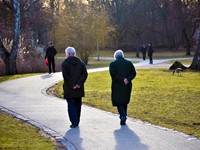1518 DANCING PLAGUE
In July 1518, a sudden and seemingly uncontrollable event took place in the city of Strasbourg. Hundreds of people began to dance uncontrollably. 400 men and women danced until they passed out from exhaustion.
First a woman known as Frau Troffea stepped into the street and began to dance silently. She continued her solo dance for almost a week without sleeping or eating. Later, others began to join him. At first they were about 34 people. But by August, the dance epidemic had infected 400 people. Local doctors were unable to provide an explanation. Eventually it was decided that it was a natural disease of overheating of the blood. Her cure was to dance until she recovered from the disease.
This event went down in history as the dance plague of 1518. A stage was immediately built for the dancers, professional dancers were brought in. There was even a band to accompany the dance. However, things did not go as planned. Others were beginning to join these dancers. Those who had danced to death began to faint from exhaustion. According to the records, many people suffered strokes and heart attacks as a result of this dance. The dancing plague of 1518 continued until September, when the dancers were taken en masse to a mountaintop temple for forgiveness. Then the dancers slowly stopped.
This dance plague may sound like a myth, but it has been documented in 16th century historical records. It is also not the only known event of its kind. Similar frenzy has happened before in Switzerland, Germany and the Netherlands. For example, it is known that in 1374 thousands of villagers on the banks of the Rhine danced along the road, screaming in pain. However, the best documented of these epidemics is the dance epidemic of 1518.
The cause of the dance plague was investigated for a long time, but no definite cause could be found. It still continues to preserve its mystery in history.
1692 SALEM HICE COURTS
The years 1692-93 were the years when many people, especially women and girls, were tried in the courts and sentenced to death on the grounds of "witchcraft and sorcery" in the town of Salem in the north-east of America. This event is known in history as the 'Salem Witch Trials'. Betty Parris, 9, and Abigail Williams, 11, showed the first symptoms. Their bodies were twitching uncontrollably, their mouths were pounding, and they were making interesting sounds. Five more girls later had similar symptoms, and locals were subsequently accused of witchcraft and witchcraft.
More than 200 people faced these charges in the courts, and 20 people, mostly women, were sentenced to death. One of the common theories for the cause of these ailments was Linnda Caporael's rye fungus theory, which appeared in Science in 1976. Those who ate rye contaminated with this parasite experienced hallucinations, muscle spasms and seizures, also known as 'rye-spur disease'. Research conducted in 2007 revealed that it is a neurological disorder and is caused by antibodies reacting against NMDA receptors. Although the cause has not yet been determined, it is thought that a virus such as herpes may have triggered it.
1962 TANZANIA LAUGHING EPIDEMIC
On January 30, 1962, the first steps of an epidemic broke out among three female students at the girls' boarding school in the village of Kashasha, Tanzania. Then the epidemic spread to the whole school. This epidemic, unlike many other epidemics, did not directly cause disease. On the contrary, it made people laugh. The problem was that this laughter was happening uncontrollably. Due to the epidemic, the school was closed for a while. However, sending boarding students to their homes offered a greater spread of the epidemic. The epidemic spread in other villages, mostly among young people, and increased its impact. This epidemic, which emerged intermittently and lasted for about 18 months, affected more than 1000 people in total, 14 schools were closed.
The patients' symptoms included recurrent episodes of laughing and crying lasting from a few hours to 16 days. These crises were accompanied by restlessness, aimless movements, and sometimes violence. Families and government commissioned experts of all kinds to provide a clue as to what was going on. But experts have not found organic causes. Investigations into the event identified it as a mass case of psychogenic or sociogenic illness.
No one was permanently affected by this epidemic, and the cause was never fully understood.
1991 RHODE ISLAND TOXIC SMOKE PANIC
In 1991, some students and teachers at a high school in Rhode Island thought toxic fumes were coming from the ventilation system. The 14-year-old girl who first noticed this smoke fell to the ground crying. She said her stomach hurts and her eyes hurt. Other students and the teacher in that room later began to experience the same symptoms. They all ran into the corridor in great fear. Soon, students and teachers in adjacent classrooms who could see the hallway clearly also began to experience symptoms.
In the end, 21 people (17 students and 4 teachers) went to the emergency room. All of them complained of dizziness, headache, and nausea. However, subsequent research found no evidence of toxic gases at school. Doctors treating children and teachers concluded that the epidemic was a case of mass hysteria sparked by fears of chemical warfare during the Persian Gulf War.


 Nielawore
Nielawore











Yorum yazmak için lütfen giriş yapınız